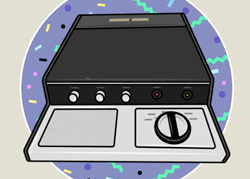You may recall from your 6th grade science class that the first telephone was invented in 1876 by Alexander Graham Bell. However, you may be surprised to learn that the first answering machine, called the Telegraphone, was created shortly after in 1898 by a man named Valdemar Poulsen. The Telegraphone was very different than the more modernized devices many people became familiar with in later decades, and looked more like a hand-crank pasta machine than an answering machine. Poulsen’s creation recorded sound on a magnetized wire, which could then be played back by the listener.
After Poulsen’s Telegraphone, the next model of answering machine wouldn’t be created until almost 20 years later. In 1914, Thomas Edison created the Telescribe, followed by Truman Stevens’ Phonograph created in 1925. While both the Telescribe and the Phonograph were unsuccessful products, they led to the design of other models that would launch the technology of telephone recording devices into a whole new playing field.
Starting in the 1930’s, the first automatic answering machine was created by Willy Mueller, and by the 1980’s there was a new model coming out almost every year. As new answering machines developed, they became smaller and more efficient by offering features like call screening, remote operation, digital voice prompting and more. At the turn of the new millennium, technology began to take off at a rapid speed, and answering machines soon developed into voicemail boxes that were pre-programmed into telephones. Not long after that, smart phone technology was introduced and today in 2019, separate answering machine devices are pretty much obsolete.
To learn more about answering machines, please check out the complete history of answering machines, where you can get an in-depth look at machines throughout the years. In our timeline, we’ve included pieces of history like newspaper clippings, TV advertisements, and more!
